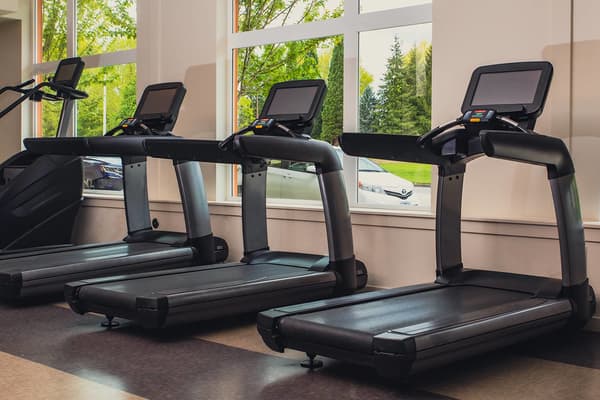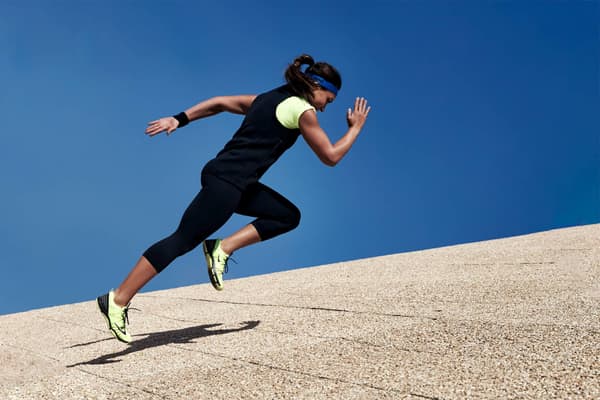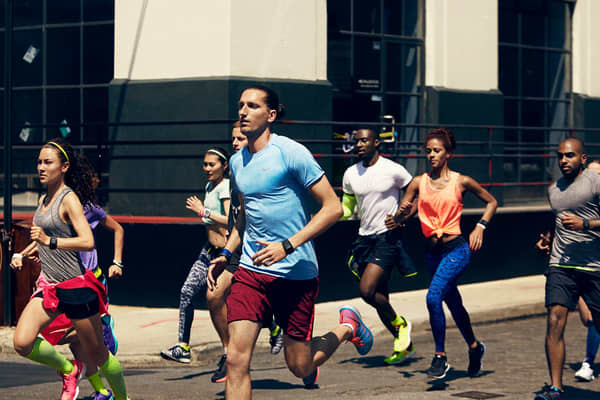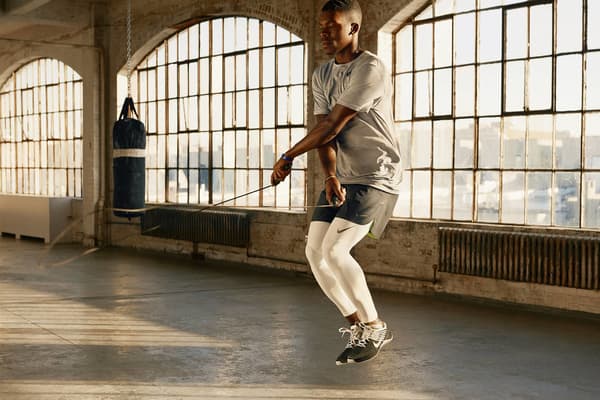What Is Breath Work—And Can It Help Your Sports Performance?
Sport & Activity
Learning to control your breath may relieve pre-competition jitters, improve endurance, boost accuracy and more.

Many of us don't give breathing a second thought. However, focusing on it as a practice, otherwise known as breath work (or breath control) can not only help to decrease stress, it can also improve sports performance.
What Is Breath Work?
A fairly broad term, breath work refers to any type of breathing exercise or technique that intentionally changes your breathing pattern.
In yoga, breath work takes the form of pranayama. According to a 2020 randomised controlled clinical trial published in Frontiers in Psychiatry, the practice—which consists of a series of controlled breathing exercises—was found to reduce anxiety. Using functional magnetic resonance imaging, or fMRI, researchers discovered that one month of pranayama practice led to significant changes in activity and connectivity of areas in the brain involved in processing emotions and anxiety.
Breath work is also a key component of other mind-body activities, including Pilates and meditation. But breath work isn't reserved for yoga and meditation buffs. It's also used by athletes in various sports looking for an edge over their competition.
"I would define 'breath work' more as 'breath control', or being able to control one's breath for athletic performance or competition", says Todd Buckingham, Ph.D., lead exercise physiologist at Mary Free Bed Sports Rehabilitation Performance Lab.
According to Buckingham, the ability to control your breath may be more important in some sports than others. For example, free divers (people who dive underwater to varying depths without breathing equipment), swimmers and athletes in target sports (such as archery or the biathlon) are examples of athletes whose performance relies heavily on breath control.
For most athletes, the consequences of substandard breath control aren't nearly as dramatic as they are for free divers, for example. However, learning how to breathe when exercising or controlling your breath may benefit your sports and exercise performance.
A Refresher on How Breathing Works
Every breath launches a complex cycle that begins with the lungs.
First, your lungs bring in oxygen. "From there, the oxygen must diffuse into the blood, and then be sent to the heart to be pumped out to the rest of the body", says Buckingham. Once the oxygen is back in your blood, it gets transported to muscles to be converted into adenosine triphosphate, or ATP. For context, ATP is the energy source that powers your every move.
While all this is going on, carbon dioxide (a colourless, odourless gas and waste product) is getting transported from your blood to your lungs to be exhaled. According to the National Heart, Lung, and Blood Institute, this process is called gas exchange, and it's essential to life.
The process is also essential to exercise and sports performance. When you exercise or when your muscles are at work, your body uses more oxygen and creates more carbon dioxide, according to a 2016 article in the journal Breathe.
"Breathing well is important to meet the ventilatory demands of exercise, as this ultimately impacts the gas exchange in the lungs, which gets oxygen into the blood and removes carbon dioxide", says Mitch Lomax, Ph.D., senior lecturer at the University of Portsmouth and a researcher who studies breathing limitations during exercise.
Breath work may help you optimise this process depending on your goals or needs.
The Benefits of Breath Work
1.Breath Work Helps Calm Pre-Competition Jitters
It's common for some athletes to feel anxious before training or competitions. Unfortunately, the physical response to performance anxiety (increased muscle tension, narrowed visual field, greater distractibility) increases an athlete's odds of injury, note the authors of a 2017 paper in Open Access Journal of Sports Medicine.
Pre-competition breath work can help to ease anxiety. Breathing in and out through your nose (known as nasal breathing) can help to calm down. Nasal breathing tends to be slower, which can lead to taking fuller, deeper breaths, according to Lomax. And, she adds, those fuller, deeper breaths stimulate the parasympathetic nervous system—the part of the nervous system responsible for carrying out basic functions in the body—promoting a calming effect.
Box breathing, a form of deep yogic breathing, can help you relax even more by giving your brain something to focus on: counting. According to the Cleveland Clinic, this technique involves breathing in slowly for four counts, holding for four counts, breathing out for four counts and pausing for four counts. Then, you repeat three times. Silently counting the beats can act as a form of meditation to calm the nervous system and keep you grounded in the present moment.
2.Breath Work Can Help You Swim Faster
Swimming is one of those sports where breath work is especially critical for success. "You can't simply breathe at will, the way you can when walking or running, but [you] must coordinate each inhalation with an arm stroke", says Lomax.
The more breaths you have to take, the more movement you may end up introducing to your stroke. For some, this added movement can slow your pace down—but this may not be the case for more seasoned swimmers.
"This is why you will see 50-metre sprinters take one breath [or none] for the entirety of the event. Because the race is often decided by less than a tenth of a second, any extra time the swimmers can save is important", says Buckingham.
3.Breath Work Can Help With Heavy Weightlifting
Breath control, in particular the Valsalva manoeuvre, can help when lifting heavy weights.
This method involves holding your breath and then exhaling against a closed glottis (the part of the throat that consists of the vocal cords and the opening between them). "It's almost like you're breathing out, but no air escapes from your mouth", says Buckingham.
Here's how you do it: Start by closing your mouth, then pinch your nose so that no air can escape from your nostrils. Then, press the air out in the same way you'd blow up a balloon. This form of breath control increases the pressure in your abdominal wall, which makes your trunk more rigid and your spine more stable, according to a 2013 review in the Journal of Strength and Conditioning Research. This enables you to lift heavier weights, says Buckingham.
Take care, however, "as the Valsalva manoeuvre can drastically increase systolic blood pressure and in some cases lead to fainting", he warns. Only use it under the guidance of a certified personal trainer or licensed physiotherapist. And steer clear if you have high blood pressure.
Don't miss Can Your Legs Get Stronger from Running?
4.Breath Work Can Boost Endurance
Working your inspiratory muscles (the muscles that contract to bring air into the lungs) may improve your strength and stamina and reduce breathing fatigue. This, in turn, may improve running, swimming, rowing and cycling endurance. It does this by lowering heart rate and blood lactate (an indicator of muscle fatigue) and by making exercise and breathing feel easier, Lomax explains.
In a controlled clinical trial published in a 2011 edition of Journal of Sport Sciences, Lomax and colleagues found that runners who practised inspiratory muscle training (exercises that strengthen your diaphragm and ribcage muscles) daily for four weeks were able to cover more distance than the control group. Runners saw even greater results when they combined inspiratory muscle training with inspiratory muscle warm-ups done before exercise.
Inspiratory muscle training can be done with a commercial hand-held device. There are various methods to train your inspiratory muscles, and training approaches can vary markedly from one device to another. Before you start this training, it's always a good idea to check in with your doctor to make sure there aren't any potential adverse health risks associated with these methods.
Lomax often uses a type of inspiratory muscle training known as pressure-threshold training. "With pressure-threshold training, you breathe through a mouthpiece connected to a small, handheld device in a controlled, unrushed manner for a set number of breaths or a set amount of time, once or twice per day", she says. "Inside the device is a valve that only opens, thereby permitting airflow, when you put in enough effort".
If you practise inspiratory muscle training daily, your breathing muscles should get stronger after a couple of weeks, though Lomax adds that it typically takes about four to six weeks to see sizeable changes.
The results may vary depending on how strong your muscles were to begin with, but the athletes Lomax studied made notable improvements in their physical fitness. More specifically, after routinely practising inspiratory muscle training the athletes ran 16 percent further before reaching exhaustion, improved swimming speed by 2–7 percent, shaved 115 seconds off their 40-kilometre (about 25 miles) cycling time trial, and completed a 5000-metre (3.1 mile) rowing time trial 36 seconds faster than before they trained those muscles.
But what if you don't have a hand-held device at home or don't have the means to purchase one? There are other ways you can strengthen your breathing muscles that require minimal or no equipment.
"Some people engage in yoga-type breathing, which can aid overall wellness. Singing is also used as part of some pulmonary rehabilitation programmes for individuals who have respiratory muscle weakness and pulmonary diseases [like] COPD", says Lomax. "It could also be argued that inflating balloons is a form of breathing muscle training".
RELATED: The Top 3 Yoga Poses To Get Stronger, According to Experts
5.Breath Work Improves Accuracy in Target Sports
Breath control is paramount to success in target sports such as archery and the biathlon (a winter sport that combines cross-country skiing and rifle shooting). According to USA Shooting, the act of breathing creates movement in the abdomen, chest and shoulders. This movement causes the gun (or bow) to shift significantly, making it tough to take an accurate shot. "When success is determined in millimetres, the slightest misstep could be the difference between winning and losing", says Buckingham.
Therefore, it's essential for athletes in these sports to learn how to coordinate their breathing with their attempts. "These athletes will actually shoot in between heartbeats, which they control through their breathing", says Buckingham.
Tips to Get Started With Breath Work
- Use an app. Mobile apps such as Calm and Headspace can guide you through various breathing techniques designed to help you relax, become more present and sleep.
- Do yoga. Breath work is a key component in any yoga style or practice. Aim to follow the instructor's breathing cues as closely as possible to gain more awareness of how your practice is affected by your breath.
- Try box breathing. Box breathing may calm a busy brain and lower stress. Practise it first thing in the morning or after you get home from work. Once you get the hang of it, you can pull it out of your back pocket when you feel stressed or overwhelmed. Follow these steps from the Cleveland Clinic: breathe in slowly for four counts, hold for four counts, breath out for four counts and pause for four counts. Repeat three times.
- Strengthen your breathing muscles. If you're already strength training on a regular basis and looking for an additional technique to improve running, cycling, rowing or swimming performance, give inspiratory muscle training a try. According to Lomax, most inspiratory muscle training devices come with suggested programmes to follow. However, as with any exercise programme, be sure to check with a healthcare professional before starting, she says.
Words by Lauren Bedosky
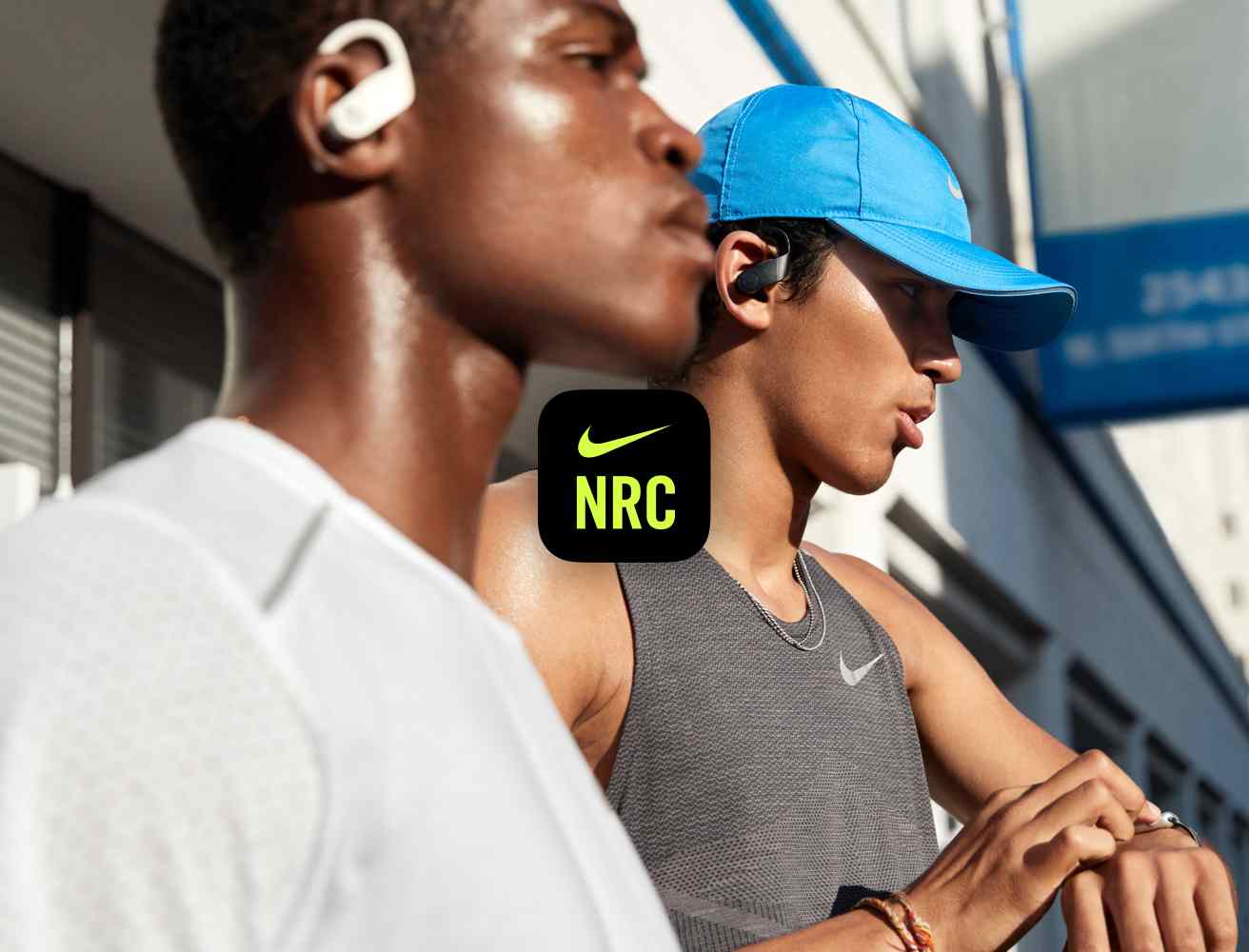
Nike Run Club
Listen to the Guided Runs in the Nike Run Club App and run with some of the best coaches and athletes, like Eliud Kipchoge, Shalane Flanagan and Mo Farah. Our Guided Runs give you the guidance you need to listen to your body, adapt to your training plan and become your own best coach.
